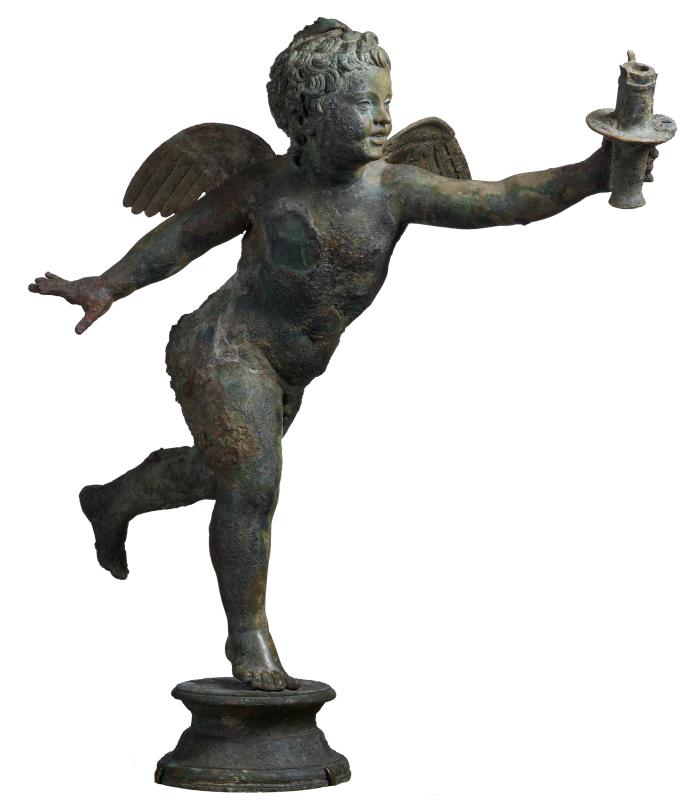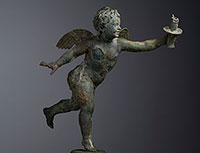
Likely dating to the second or first century BC, this Hellenistic bronze was apparently Morgan's favorite object; his son-in-law recalled that he wanted to have it “constantly in sight.” The running putto-a naked child with tiny wings-is portrayed holding the base of a torch into which a candle would have been inserted. A symbol of Eros, god of Love, the figure parts his lips as if he is slightly out of breath, and the beginning of a smile appears on his face. The bronze figure was among a trove of precious objects excavated in 1895 in Boscoreale, near Naples, a town on the slope of Vesuvius, just above Pompeii. This was the site of several Roman villas that had been destroyed in the eruption of the volcano in 79 AD. The surviving objects remained buried underground for almost two thousand years until their excavation. This helps explain the corrosion visible over much of the figure's body. Despite the surface damages, the naturalism and grace of this sculpture-as well as the expressive modeling of the putto's face-remain unimpaired. Such characteristics exemplify the achievement of classical Greek art, which continued to be prized by ancient Roman aristocrats, who collected such objects for use and display in their luxurious country retreats.

